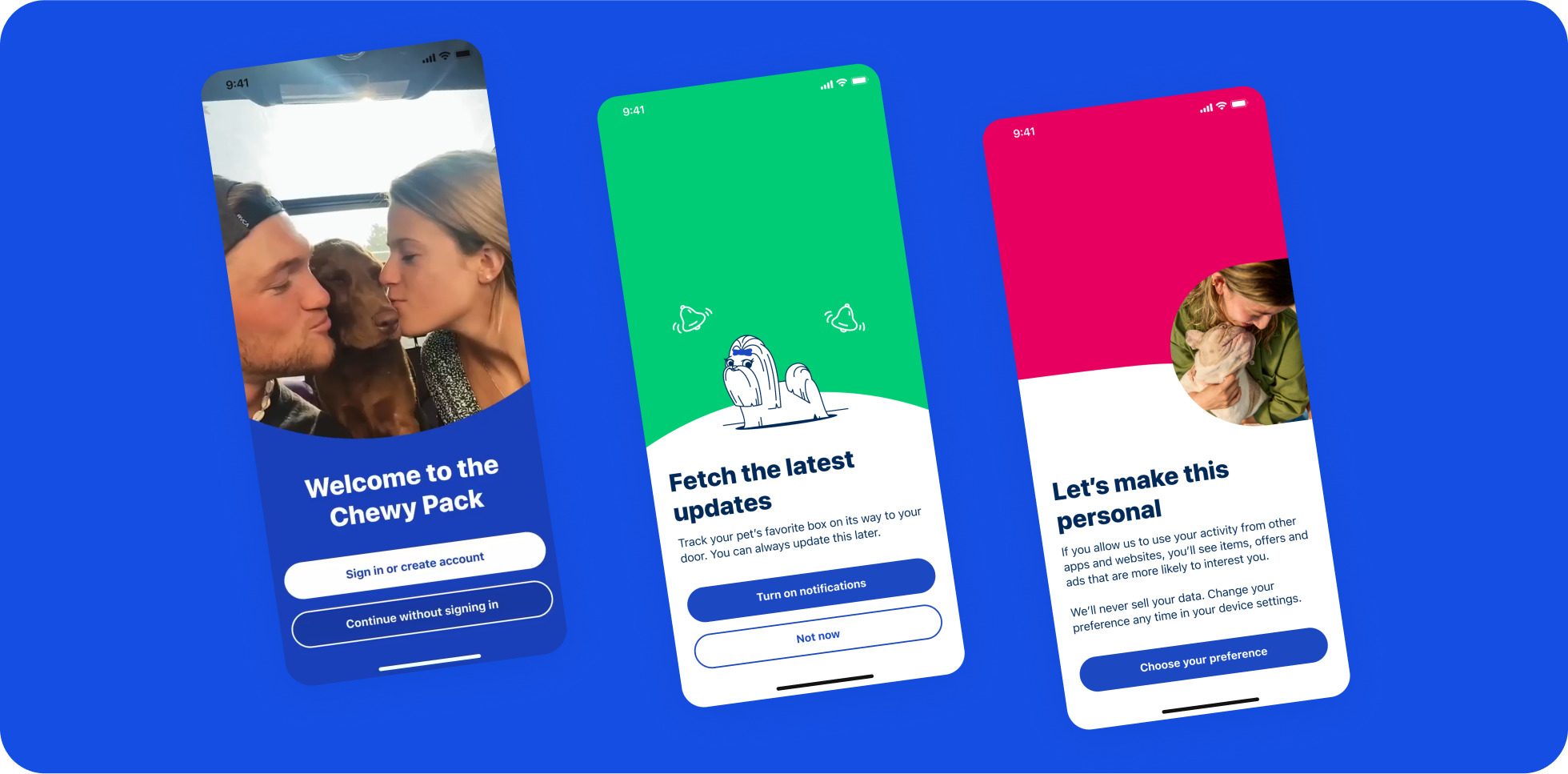
Modernizing an Outdated App For Chewy
For years, customers had complained about Chewy’s outdated and hard to use app. In 2024, Chewy put a renewed focus on the app. I was chosen to lead design on a brand new “App Team,” sharing progress in monthly UX presentations with Chewy’s CEO.

Problem
Customers complained that the Chewy app looked like a "website from 2007." Most customers who downloaded it and made a purchase never returned to the app again.



Results
Solution
1. Identified & fixed papercuts, increasing sign in rates by 34.4%
I identified pain-points through customer journey mapping and prioritized fixes based on impact to our key persona, the “New to App” customer.
2. Modernized the UI language, influencing changes to the design system
Customers described the app as “looking like a web page from 2007”. I led a work-stream to identify and implement best-in-class app UI design standards. These changes influenced updates to Chewy's design system.
3. Successfully pitched a new strategic direction for the app
As it was, the Chewy app didn't hold value over the mobile website. I created information architecture sitemaps to pitch new ideas, showcasing new verticals and ways the app could be structured. This work influenced a new app strategy and app tab currently in development.
4. Implemented new App Design processes within the design organization
Part of the new App Team mandate was to create an app-led design culture. I co-implemented and co-led an app office hours series. These changes resulted in increased knowledge of app design practices across the organization and more polished experiences at launch.

Through a customer journey map, I identified pain-points for our key persona, the "New to App" customer.
Learnings
“Modernizing” UI can be an opportunity to increase accessibility
Some components in Chewy's design system from years and years ago didn't meet WCAG standards. With the help of the design system team, the app team found areas of opportunity within our design updates to increase accessibility.
Intuitive value > explaining value
Interrupting customers with information during onboarding led to higher bounce rates. This finding was part of what led to a key decision to pitch a higher-level strategy for the app that better showcases and increases its value.
Small moments matter
Greeting pets by name, joyful videos, and witty copy can leave lasting impressions and have measurable impact.
Read another case study

